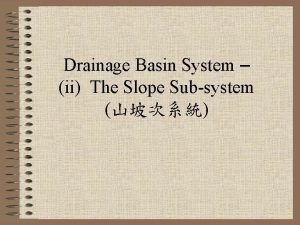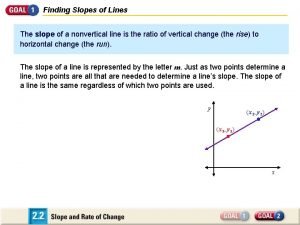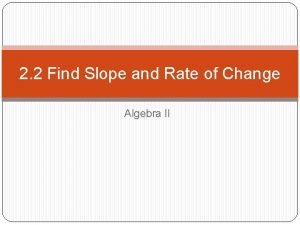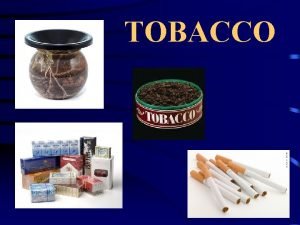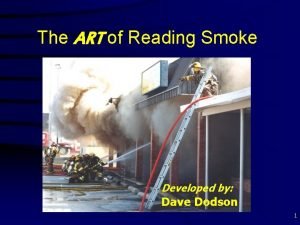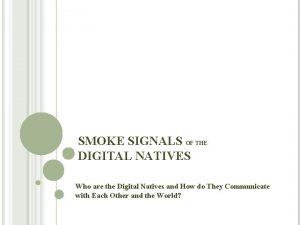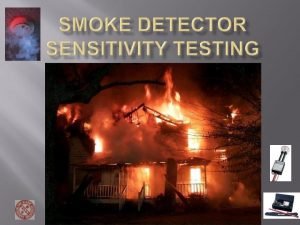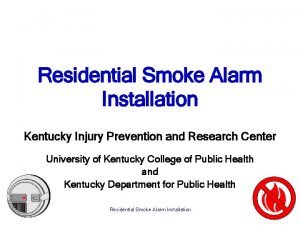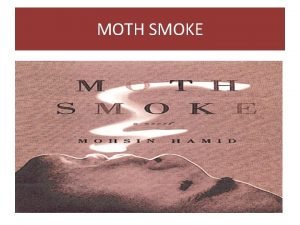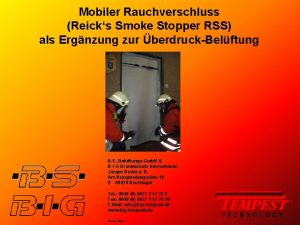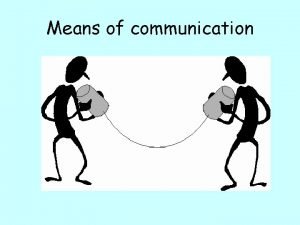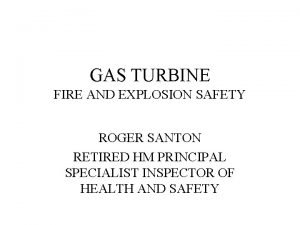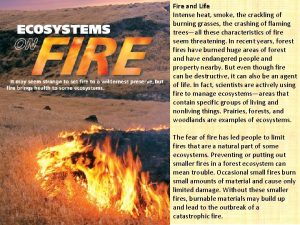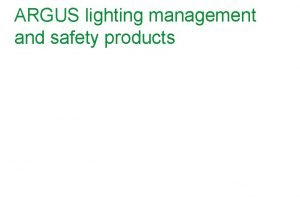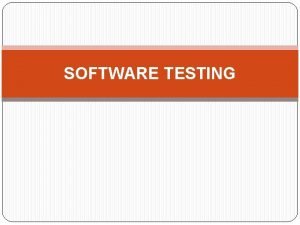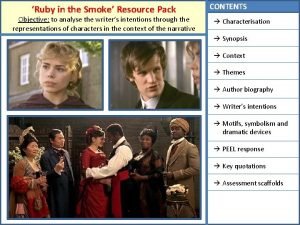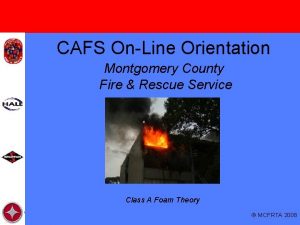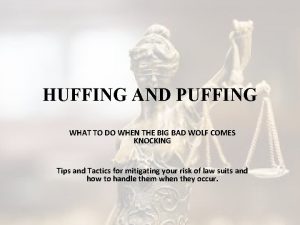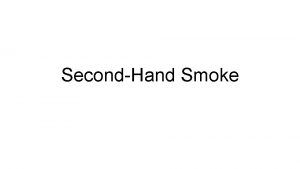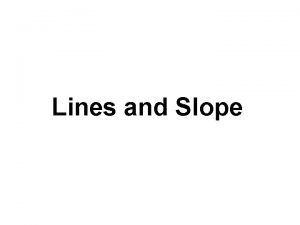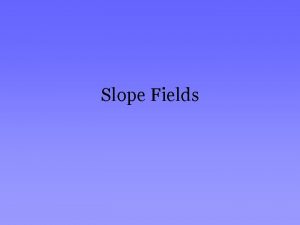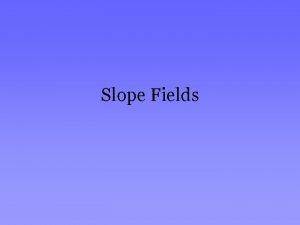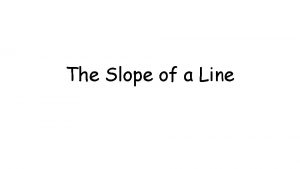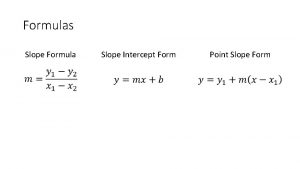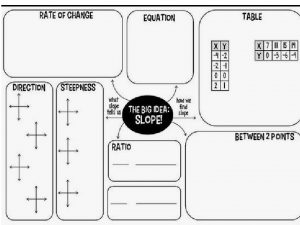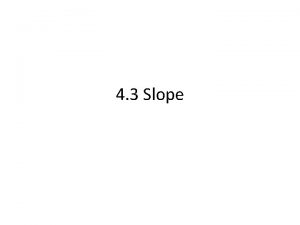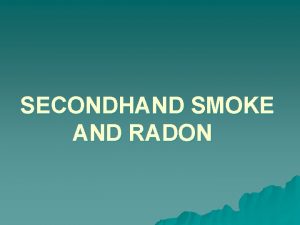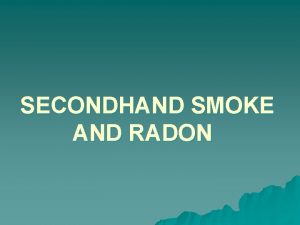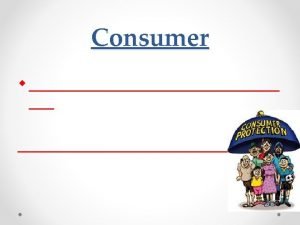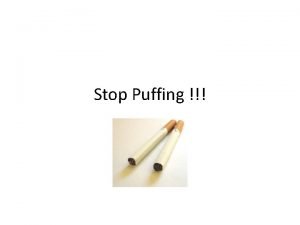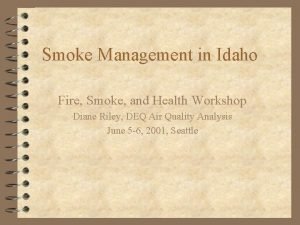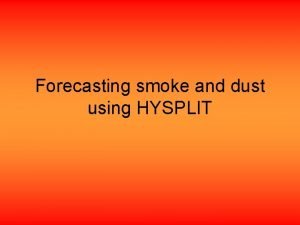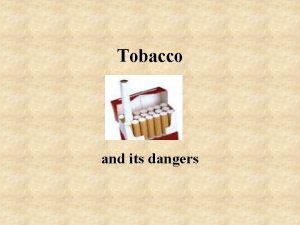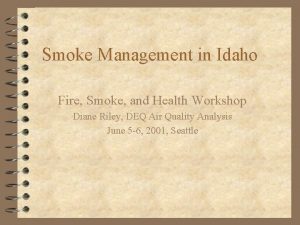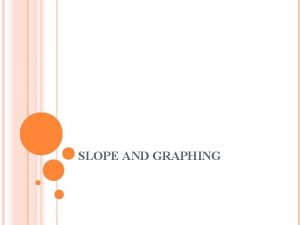Huffing and Puffing to Understand Slope or Smoke































- Slides: 31

Huffing and Puffing to Understand Slope or Smoke and You Croak Lenny Ver. Maas, ESU 6

Smoke and You Croak • Handouts—will come at the end • There is one sheet that will be completed during the activity. A clean sheet is in the handouts. Electronic copies of the handouts are on my web page.

Think About How much air will your lung hold? How could we measure that volume?

What will affect your lung capacity?

Scientific Vocabulary • • inspiratory reserve volume vital volume expiratory reserve volume residual volume vital capacity total lung capacity For exact definitions visit your friendly science teacher.

Picture of lung capacity

Learning Vocabulary • consider special strategies to help students learn the terms • circle, circumference, radius, diameter, sphere, locus of points, directly proportional, and inversely proportional

How can the volume of a person’s lung be measured? • Accurately using a spirometer • Approximation—water displacement or blowing up a balloon. • Estimate the Volume of Your Lung – Think of a 2 liter pop bottle.

Here is the MATH

A Worked Out Example

Cubic centimeters to liters

Here We Go • Take a balloon and with one breath blow as much air as possible into the balloon. • Measure and record the circumference of the balloon. • Keeping the air in the balloon add another breath and measure and record the circumference. • Add one more breath, measure and record the circumference.

Fill out the chart Circumferen ce After Breat h 1 After Breat h 2 After Breat h 3 Diameter Radius Volume in cubic centimete rs

Measure the circumference after one breath.

Concentrate and Measure

Measure Circumference After 2 nd Breath

Measure the circumference after the third breath

How Big Can Your Balloon Go?


What to do if your balloon looks like this?


Plotting Your Data Circum fere nce Vol. in liter Diameter in cm Radius in cm

Time to Collect Data

• Circumference vs diameter Radius vs volume

Save Your Balloon For Some More Fun • Attach a straw and see how far and fast it will travel down a string. – Where can the straw be attached for maximum speed and distance. – Does the length of the straw make a difference. • Blow up the balloon, release the balloon, measure the time in the air, plot circumference vs time in air.

Blow up the Balloon

Attach Straw Carefully to Balloon • See how far and how fast it will travel down a string.

Down the String • Measure the time and distance. Use this data to calculate the speed



 Huffing axe body spray
Huffing axe body spray évolution de l'aspirateur
évolution de l'aspirateur To understand recursion you must understand recursion
To understand recursion you must understand recursion Free face slope
Free face slope Converting point slope to slope intercept
Converting point slope to slope intercept Slopes of lines
Slopes of lines Slope review classifying slope
Slope review classifying slope Mainstream smoke
Mainstream smoke Dave dodson art of reading smoke
Dave dodson art of reading smoke Digital smoke signals
Digital smoke signals Smoke eater definition
Smoke eater definition Walter jaeger smoke detector
Walter jaeger smoke detector Smoke in past
Smoke in past Smoke detector installation kentucky
Smoke detector installation kentucky If you were to blow smoke into the space
If you were to blow smoke into the space Moth smoke sparknotes
Moth smoke sparknotes Sidestream smoke
Sidestream smoke Smoke stopper feuerwehr
Smoke stopper feuerwehr Smoke signals communication
Smoke signals communication Writers use imagery to
Writers use imagery to Iso 21789 pdf
Iso 21789 pdf Is smoke biotic or abiotic
Is smoke biotic or abiotic Smoke guard elevator
Smoke guard elevator Widowmaker heart attack smoke inhalation
Widowmaker heart attack smoke inhalation Argus smoke detector
Argus smoke detector Use not to smoke in a sentence about staying healthy
Use not to smoke in a sentence about staying healthy Smoke free apartments
Smoke free apartments Contoh smoke testing
Contoh smoke testing Ruby in the smoke chapter 2
Ruby in the smoke chapter 2 Aerolab smoke generator
Aerolab smoke generator Smoke control system maintenance
Smoke control system maintenance Smoke detector repair montgomery county
Smoke detector repair montgomery county



